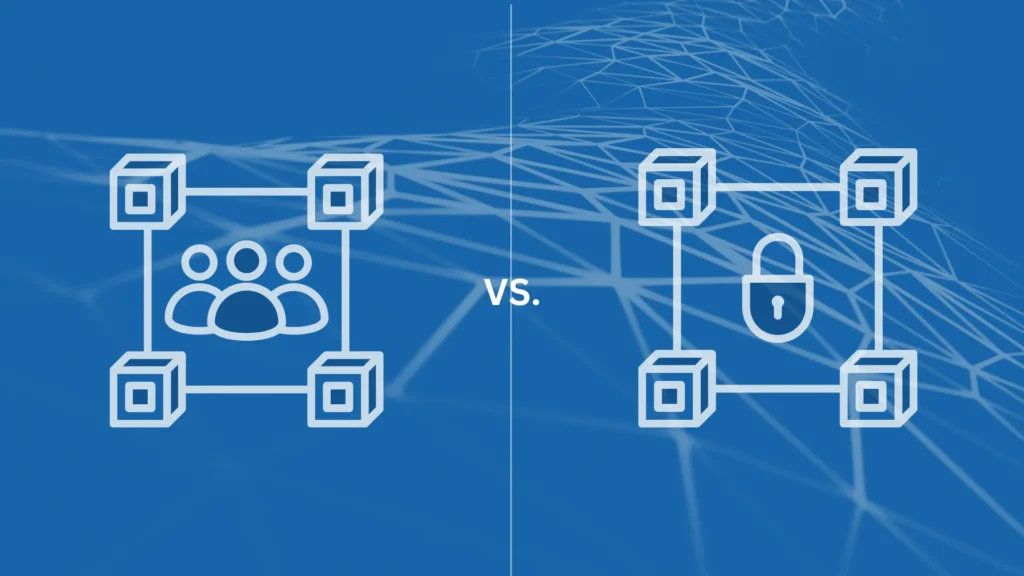The landscape of blockchain technology has undergone significant transformations over the past few years, with private blockchain technology emerging as a promising solution for enterprises. However, recent developments indicate a shift in this narrative, particularly with R3, a prominent player in the private blockchain space, reportedly exploring a sale despite strong backing from major banks. This article will delve into the factors contributing to the decline of private blockchain technology, the challenges faced by R3, and the broader implications for the industry.
The Rise of Private Blockchain Technology
Private blockchain technology was initially heralded as the solution to many of the challenges faced by businesses seeking to leverage blockchain’s benefits while maintaining privacy and control. Unlike public blockchains, private blockchains restrict access to a select group of participants, enabling businesses to enjoy the advantages of blockchain—such as transparency and immutability—without sacrificing sensitive data.
Advantages of Private Blockchains
- Controlled Access: One of the primary benefits of private blockchain technology is that it allows organizations to control who can access the network, thus ensuring that sensitive information remains confidential.
- Increased Efficiency: By limiting the number of participants in the network, transactions can be processed more quickly, enhancing overall efficiency compared to public blockchains.
- Regulatory Compliance: Many industries face stringent regulatory requirements regarding data privacy and security. Private blockchain technology can be tailored to meet these compliance needs more effectively than public counterparts.
The Challenges Facing R3 and Private Blockchain Technology
Despite these advantages, private blockchain technology is facing several challenges that have led to its decline. The exploration of a sale by R3, once considered a leader in this space, raises questions about the viability of private blockchains as a long-term solution.
1. Market Saturation
The initial enthusiasm for private blockchain technology has resulted in a saturated market. Many companies rushed to develop their own solutions, leading to numerous platforms that often compete for the same clientele. This saturation makes it difficult for any single entity, including R3, to maintain a competitive edge.
2. Limited Adoption
While many organizations have experimented with private blockchain technology, widespread adoption has been limited. Many enterprises are hesitant to invest heavily in a technology that remains unproven in terms of scalability and long-term viability. The lack of a compelling use case that differentiates private blockchains from traditional databases further exacerbates this issue.
3. Integration Difficulties
Integrating private blockchain technology with existing systems can be complex and resource-intensive. Organizations may find it challenging to justify the costs associated with deploying a private blockchain solution when traditional technologies may suffice.
4. Shifting Focus to Public Blockchains
As public blockchain technology continues to evolve and mature, many organizations are re-evaluating their approach to blockchain solutions. The rise of decentralized finance (DeFi) and non-fungible tokens (NFTs) has captured the attention of businesses, shifting the focus away from private blockchain technology toward more innovative and publicly accessible solutions.
R3’s Journey and Recent Developments
R3 was established in 2014 as a consortium of financial institutions aiming to develop private blockchain technology tailored for the banking sector. Over the years, R3 has garnered significant support from major banks, including JPMorgan Chase, Goldman Sachs, and others. However, despite this backing, the company has struggled to achieve widespread commercial success.
Recent Reports of a Sale
Recent reports indicate that R3 is exploring a potential sale, a move that has raised eyebrows in the industry. This decision underscores the growing concerns surrounding the future of private blockchain technology. As R3 navigates these challenges, it highlights a broader trend of disillusionment within the private blockchain space.
The Implications of R3’s Potential Sale
The potential sale of R3 could have far-reaching implications for the future of private blockchain technology.
1. Impact on Innovation
If R3 is sold or fails to adapt to the changing landscape, it may stifle innovation in the private blockchain technology sector. The loss of a key player could lead to fewer resources being allocated toward research and development, hindering progress in this space.
2. Market Consolidation
The decline of R3 may pave the way for further market consolidation within the private blockchain technology sector. Smaller players may struggle to compete without the resources and infrastructure that larger companies provide, leading to a more concentrated market.
3. Shift in Business Strategies
Organizations invested in private blockchain technology may need to re-evaluate their strategies in light of R3’s potential sale. This could result in businesses exploring partnerships with public blockchain platforms or even abandoning private solutions altogether.
The Future of Private Blockchain Technology
While the decline of private blockchain technology presents challenges, it also opens up opportunities for innovation and evolution. Here are some potential directions for the future of this technology:
1. Hybrid Solutions
As organizations seek to leverage the benefits of both private and public blockchains, hybrid solutions may emerge as a viable option. By combining the strengths of both technologies, businesses can create flexible, scalable systems that meet their unique needs.
2. Focus on Interoperability
The future of private blockchain technology may also lie in improving interoperability with public blockchains. Establishing seamless connections between private and public networks could enhance functionality and create new avenues for collaboration.
3. Emphasis on Use Cases
To revitalize interest in private blockchain technology, developers must focus on creating compelling use cases that demonstrate clear advantages over traditional systems. By showcasing successful implementations, they can encourage wider adoption and investment.
Conclusion
The exploration of a sale by R3 highlights the challenges facing private blockchain technology as the market evolves. While the initial promise of this technology remains, the decline of key players raises questions about its long-term viability. As the industry continues to adapt, organizations must remain vigilant and open to exploring innovative solutions that may redefine the future of blockchain technology.



